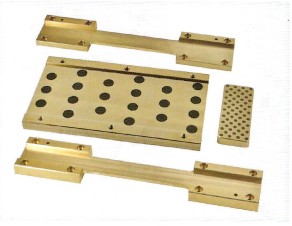self-lubricating plate
Self-lubricating plate.
A self-lubricating plate is a specialized material plate that has the ability to provide lubrication without the need for external lubricants. It is commonly used to reduce friction and wear between mechanical components while offering long-lasting lubrication performance.
Self-lubricating plates typically consist of a base material and lubricants. The base material can be metal, polymer, or composite, providing sufficient strength and durability. The lubricants are embedded or dispersed within the base material and are usually in the form of solid or liquid lubricating materials.
These lubricants are gradually released during the friction process, forming a thin and uniform lubricating layer that reduces direct contact and friction between the contacting surfaces. This helps to minimize energy loss, extend component life, and reduce wear and heat generation.
Self-lubricating plates find widespread use in various applications. They are commonly employed in bearings, gears, sliding bushings, bearing seats, and other components requiring lubrication. The advantages of self-lubricating plates include reliable lubrication performance, no need for regular lubricant addition, suitability for high-temperature and high-speed applications, and reduced maintenance requirements.
However, the performance and lifespan of self-lubricating plates are influenced by factors such as load, speed, temperature, and environmental conditions. Therefore, when selecting and applying self-lubricating plates, it is important to evaluate and test them based on specific requirements and conditions to ensure optimal effectiveness and long-lasting lubrication performance.
